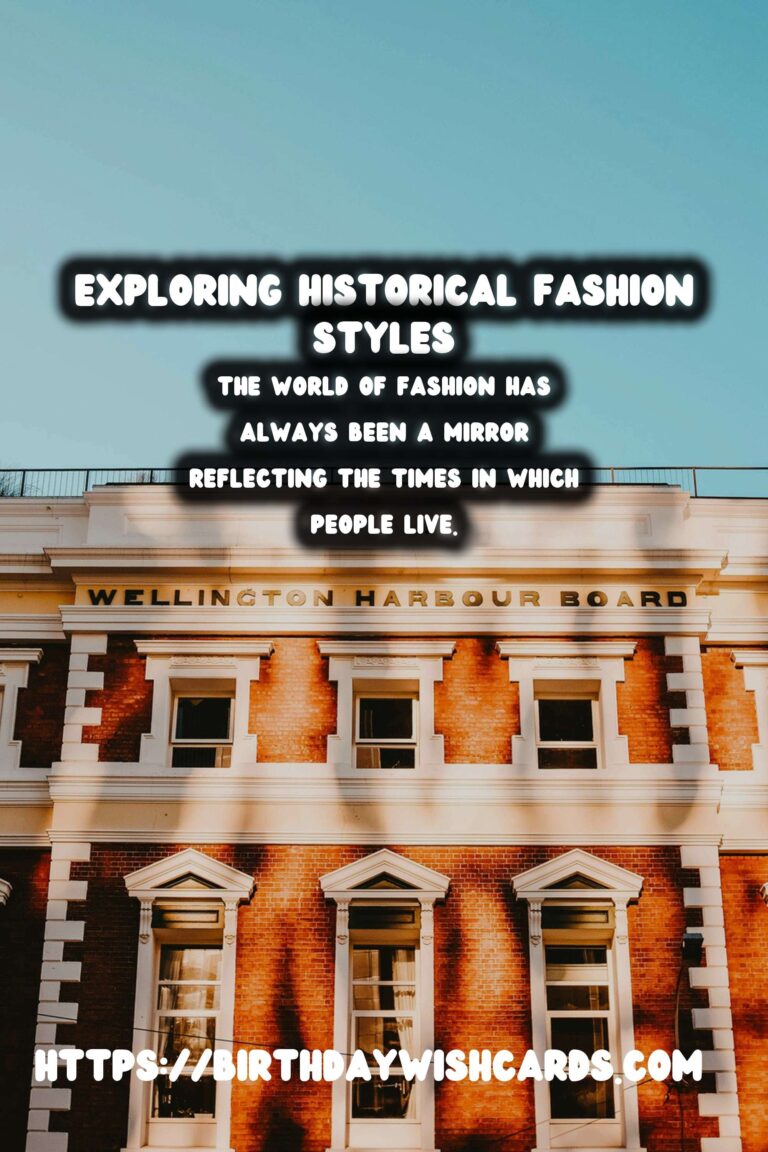
The world of fashion has always been a mirror reflecting the times in which people live. From the ornate designs of the Renaissance to the whimsical flexibilities of the Romantic era, historical fashion offers a fascinating insight into cultural shifts and technological advances.
The Renaissance Era: Embroidered Elegance
Dated from the 14th to the 17th century, the Renaissance was a period of cultural rebirth and artistic innovation. This era saw an explosion in rich fabrics, intricate designs, and elaborate garments, particularly in Italy and France.
Garments for men and women were often composed of heavy fabrics like velvet and silk, adorned with opulent embroidery, lace, and jewels. Doublets for men and corsets for women were popular, influencing silhouettes with a focus on broadening the upper body.
Baroque and Rococo Fashion: Ornate Detail
As the Renaissance gave way to the Baroque (1600-1750), fashion became even more elaborate, reflecting the grandeur of European courts. Clothing from this period was characterized by plenty of adornments – ruffles, tiers, and gold threading.
The Rococo period (early to late 1700s), which followed, favored pastel colors, floral patterns, and an overall lightness in dress that still utilized the lavish trimmings and layered fabrics.
Neoclassical Fashion: Elegance and Simplicity
In contrast to the ornate Baroque and Rococo styles, the Neoclassical period brought about a return to simplicity and elegance, influenced greatly by the archaeology and rediscovery of ancient Greece and Rome.
The late 1700s saw the rise of the ‘Empire silhouette’ for women – simple dresses with high waistlines made of lightweight fabrics such as muslin. For men, the focus was on neatness and tailoring, with breeches and waistcoats becoming standard attire.
The Romantic Era: Whimsical Transitions
The Romantic era (early 19th century) was all about expressing emotion, imagination, and individualism. This sentiment was signified by a distinct departure from the restrained styles of the Neoclassicism.
Women wore voluminous skirts supported by crinolines or hoop skirts, while puffy sleeves and ornate trims became popular. Men’s fashion embraced more relaxed fits, with longer jackets and looser trousers, reflecting the changing attitudes toward comfort and personal expression.
Impact on Modern Fashion
Historical fashion periods have left a lasting legacy on modern fashion design. Many contemporary designers draw inspiration from these rich epochs, reinterpreting elements such as corsets, intricate embroidery, and luxurious fabrics.
Today’s fashion industry continues to cycle through various fashion histories, utilizing them as both a tribute and a tool to innovate and inspire the future of clothing design.
Conclusion
The fashion between the Renaissance and the Romantic era reveals much about the social, political, and technological changes of the times. These fashions are more than mere garments – they are representations of history woven into every thread.
Whether it’s the grandeur of the Baroque or the elegant simplicity of Neoclassicism, historical fashion continues to enthrall and influence, telling stories of the past while shaping the evolution of style.
The world of fashion has always been a mirror reflecting the times in which people live. The Romantic era was all about expressing emotion, imagination, and individualism.
#HistoricalFashion #FashionHistory

